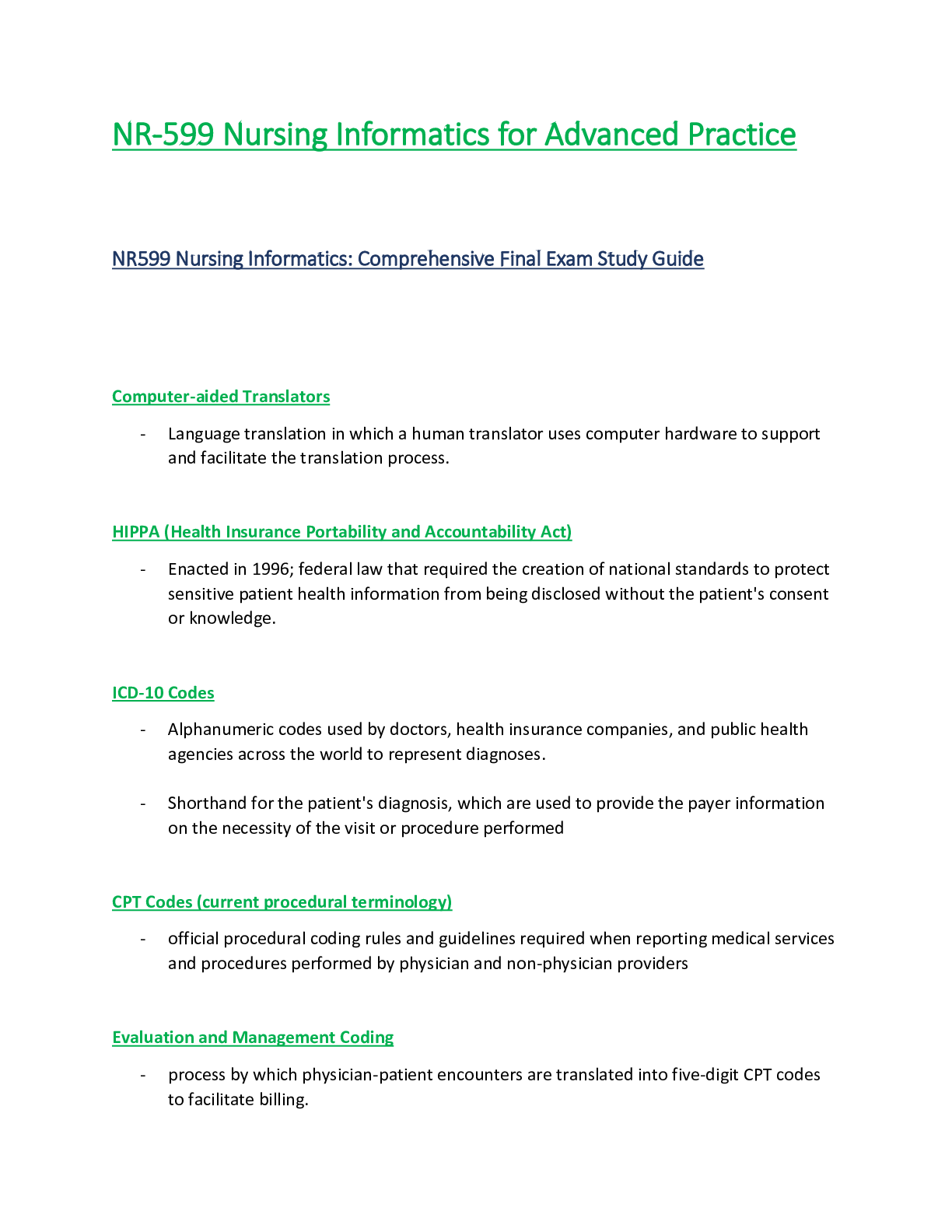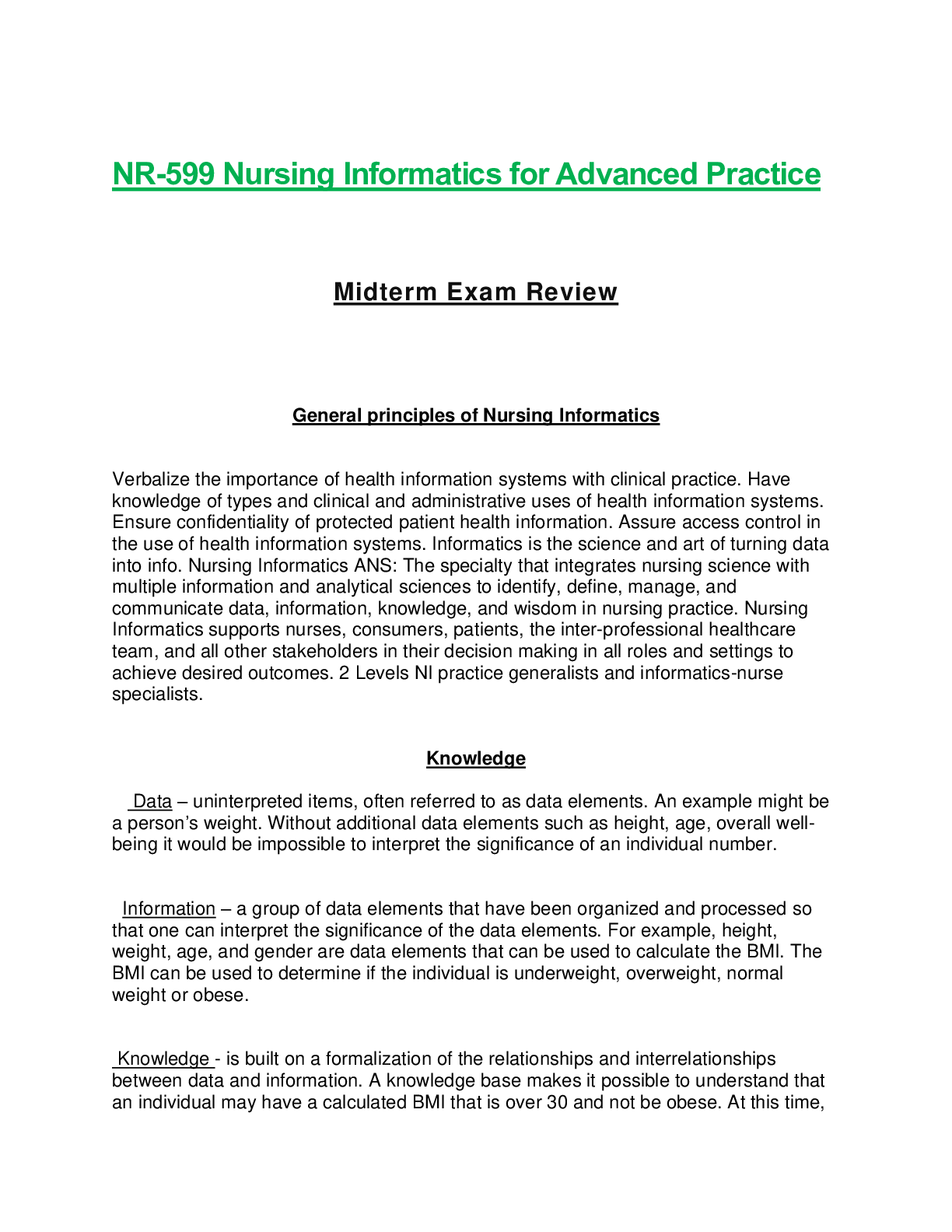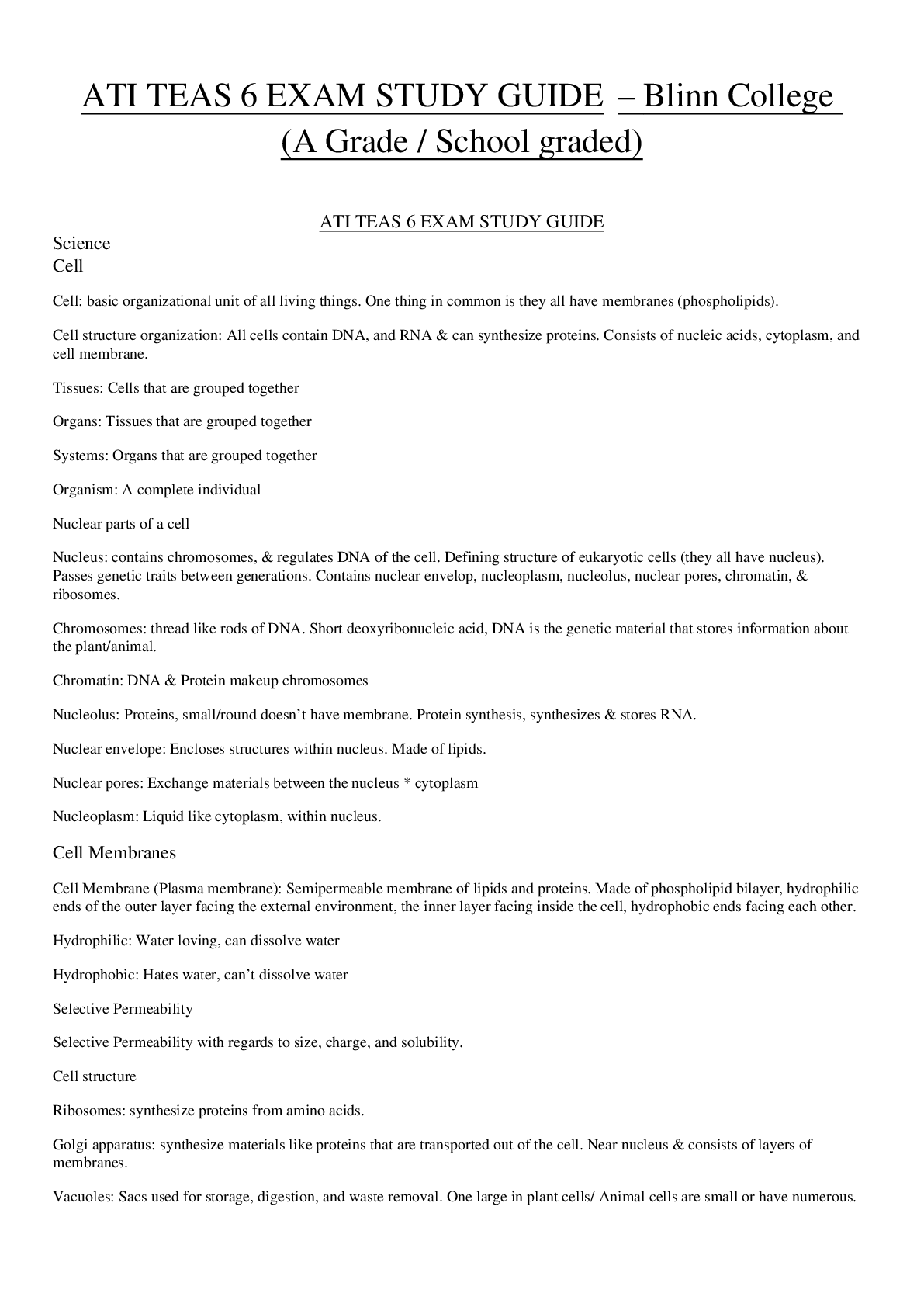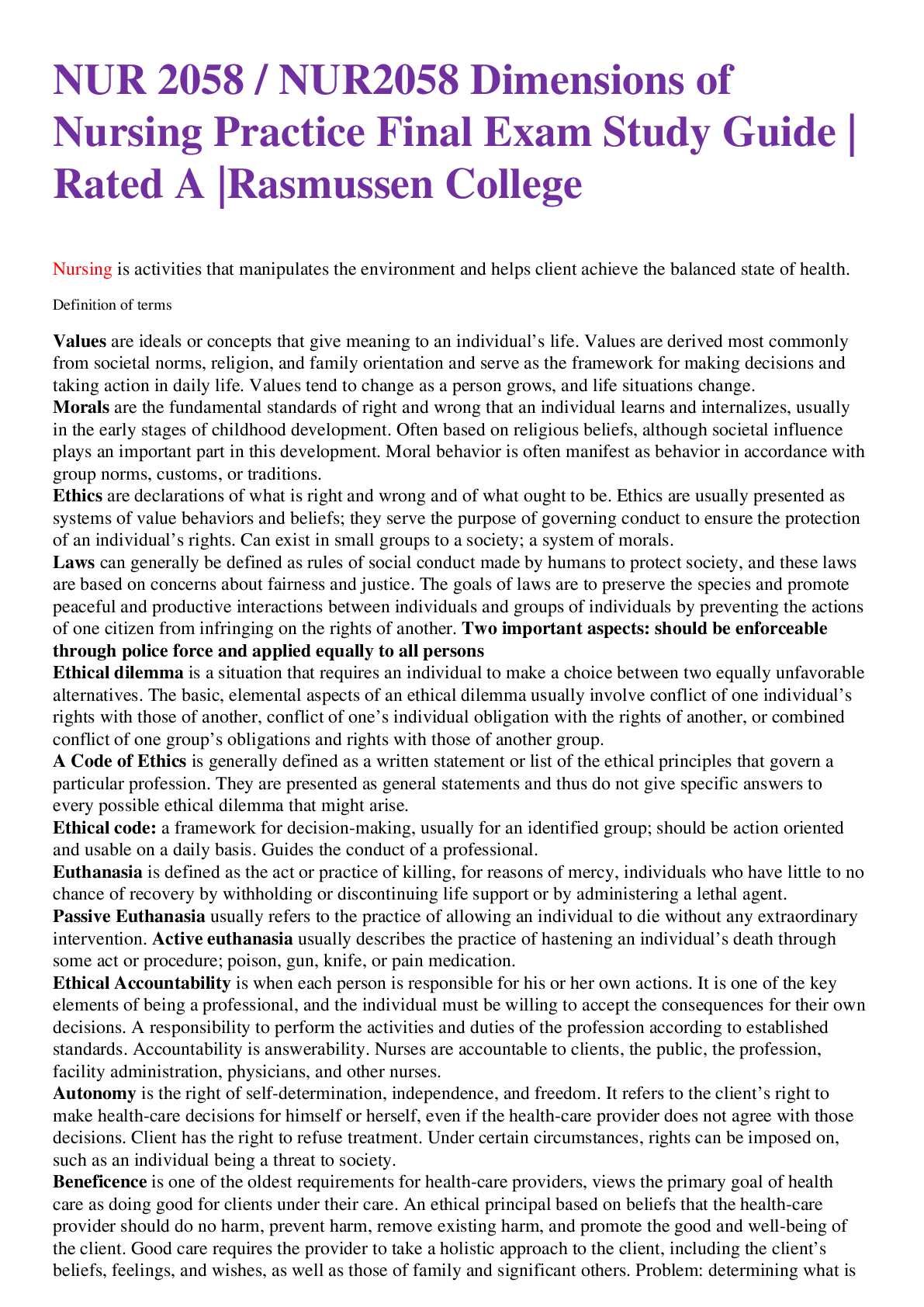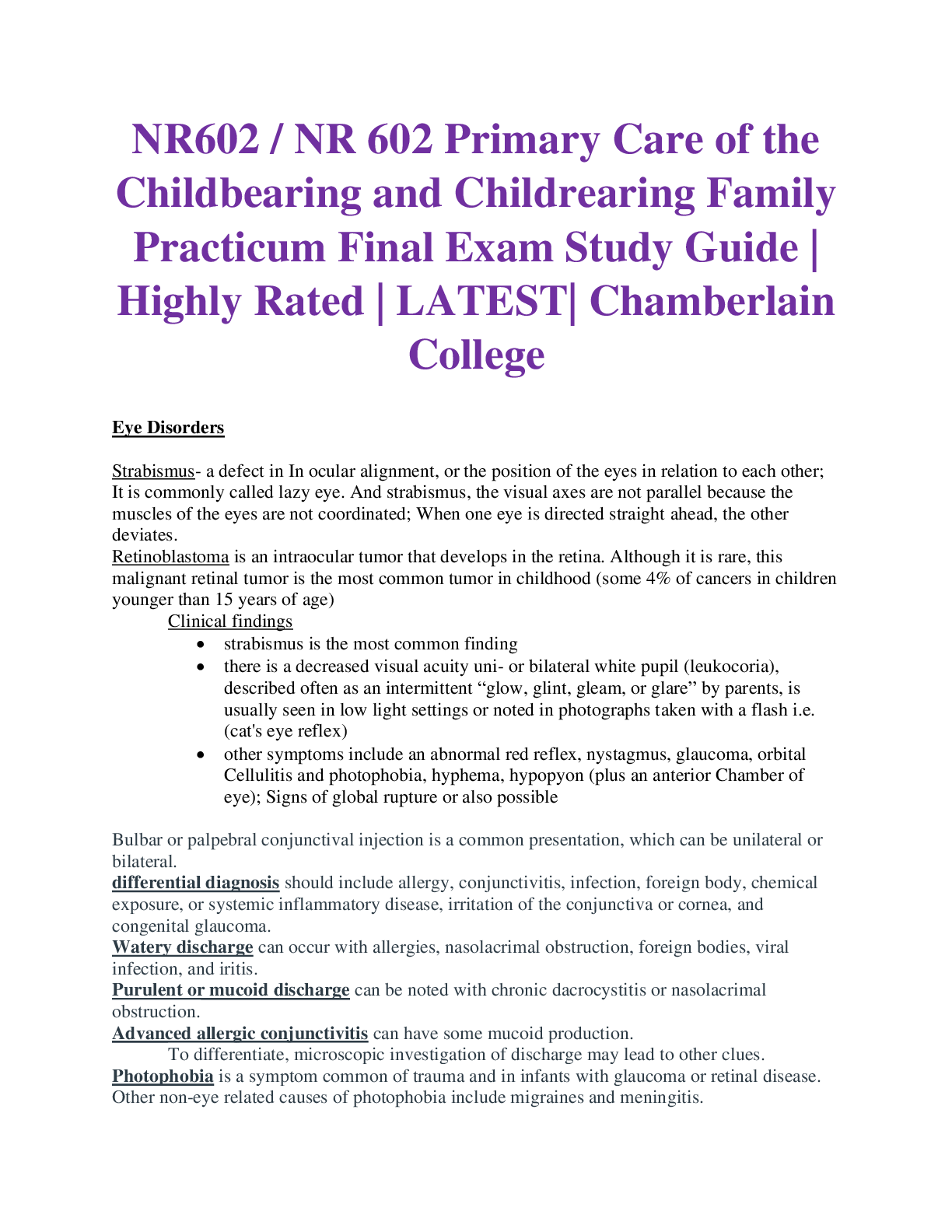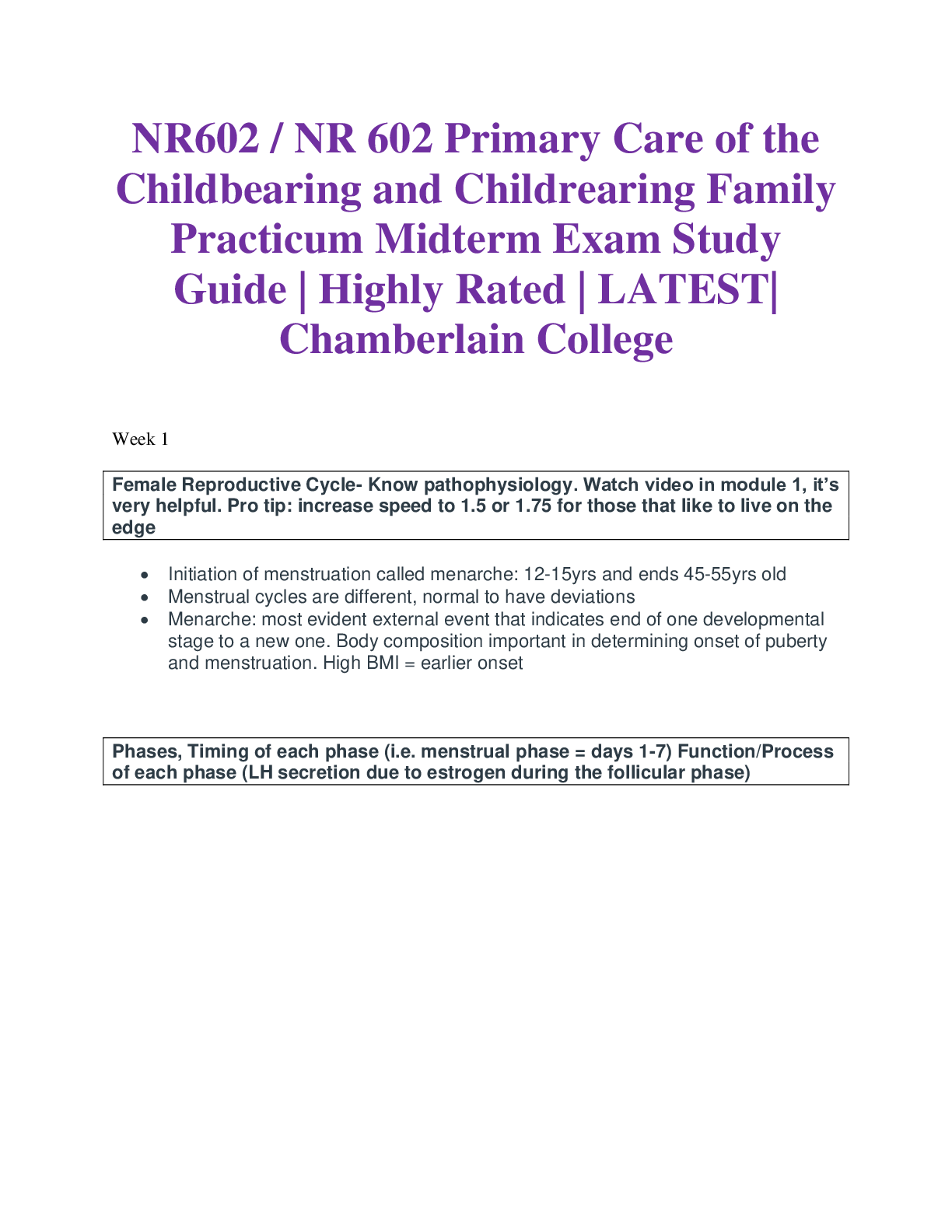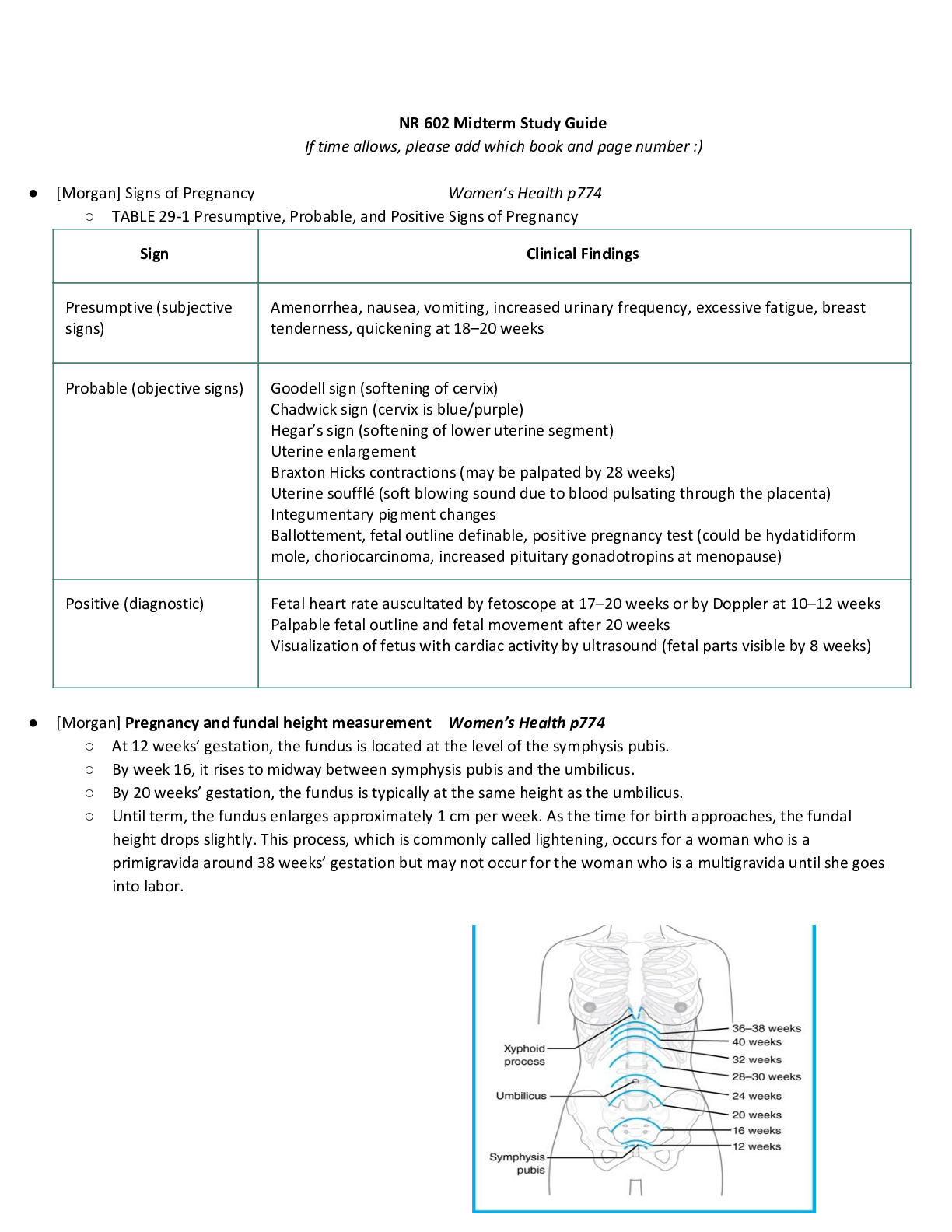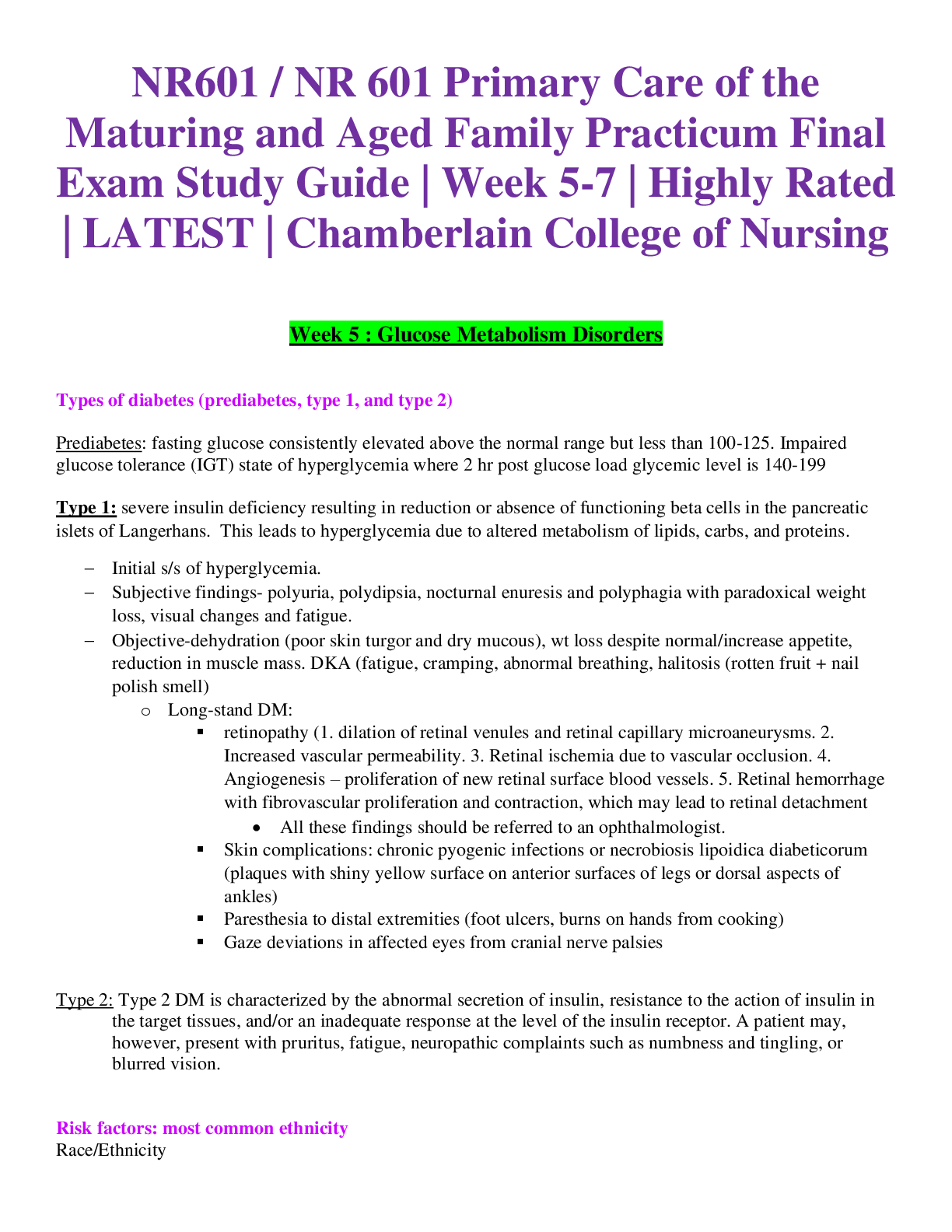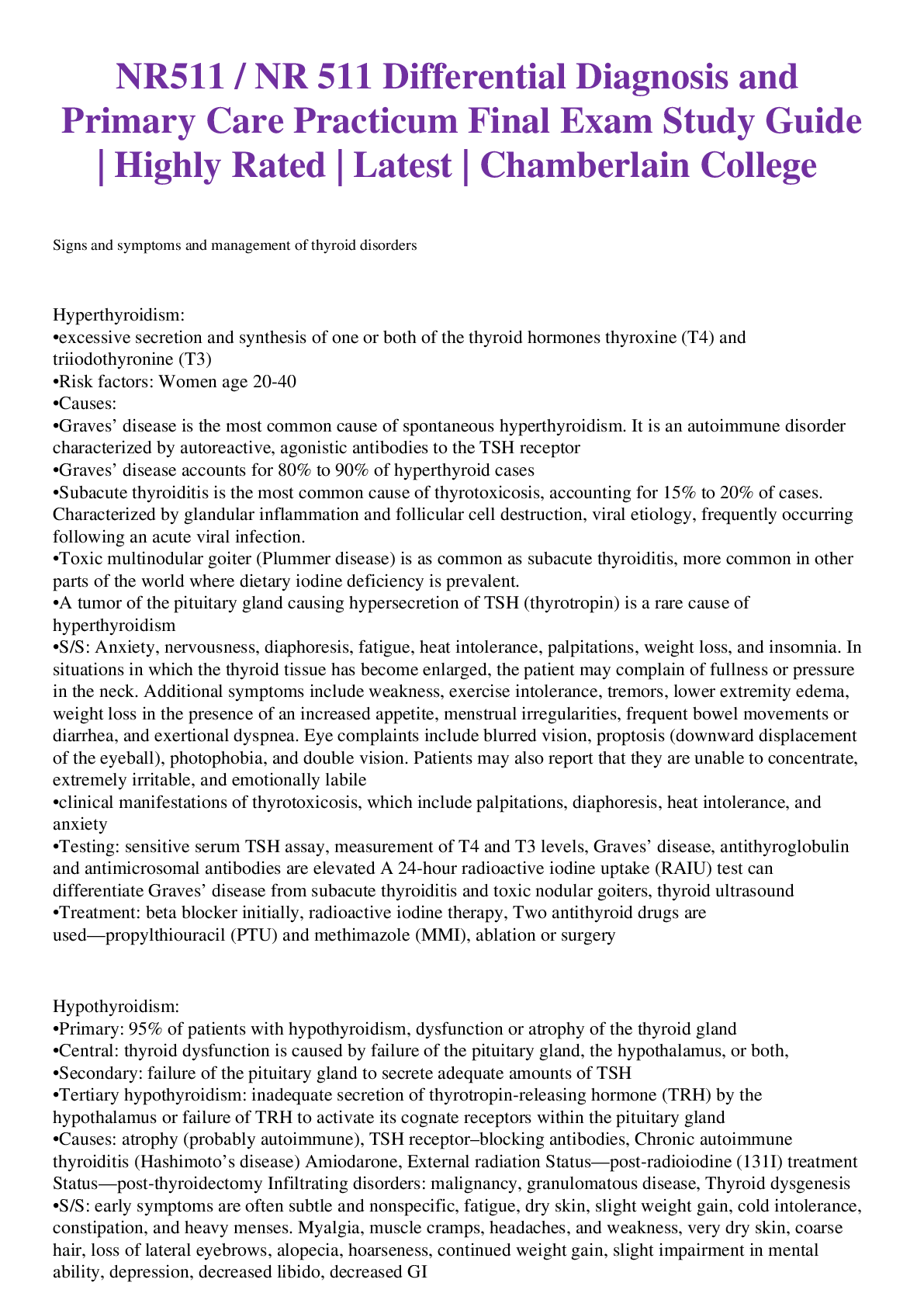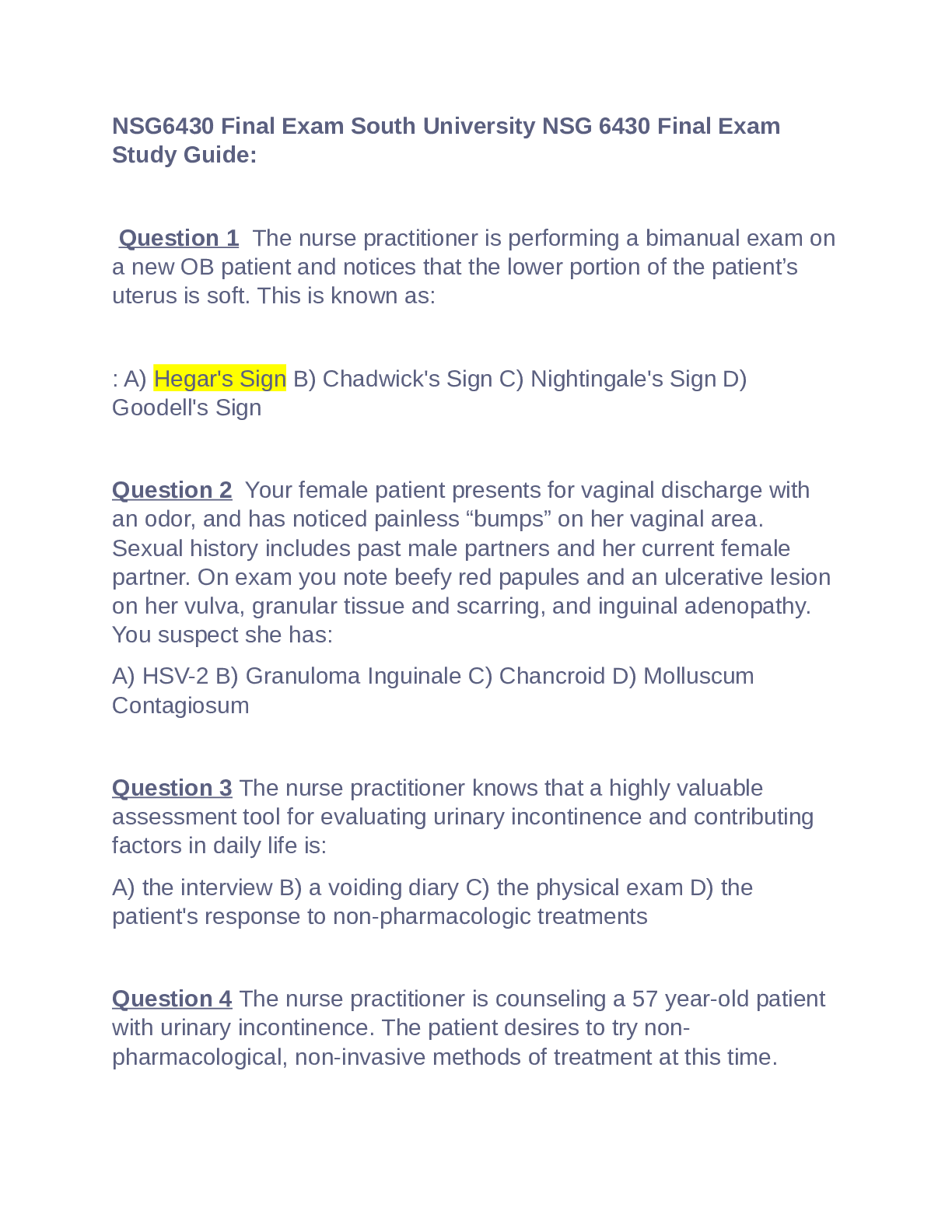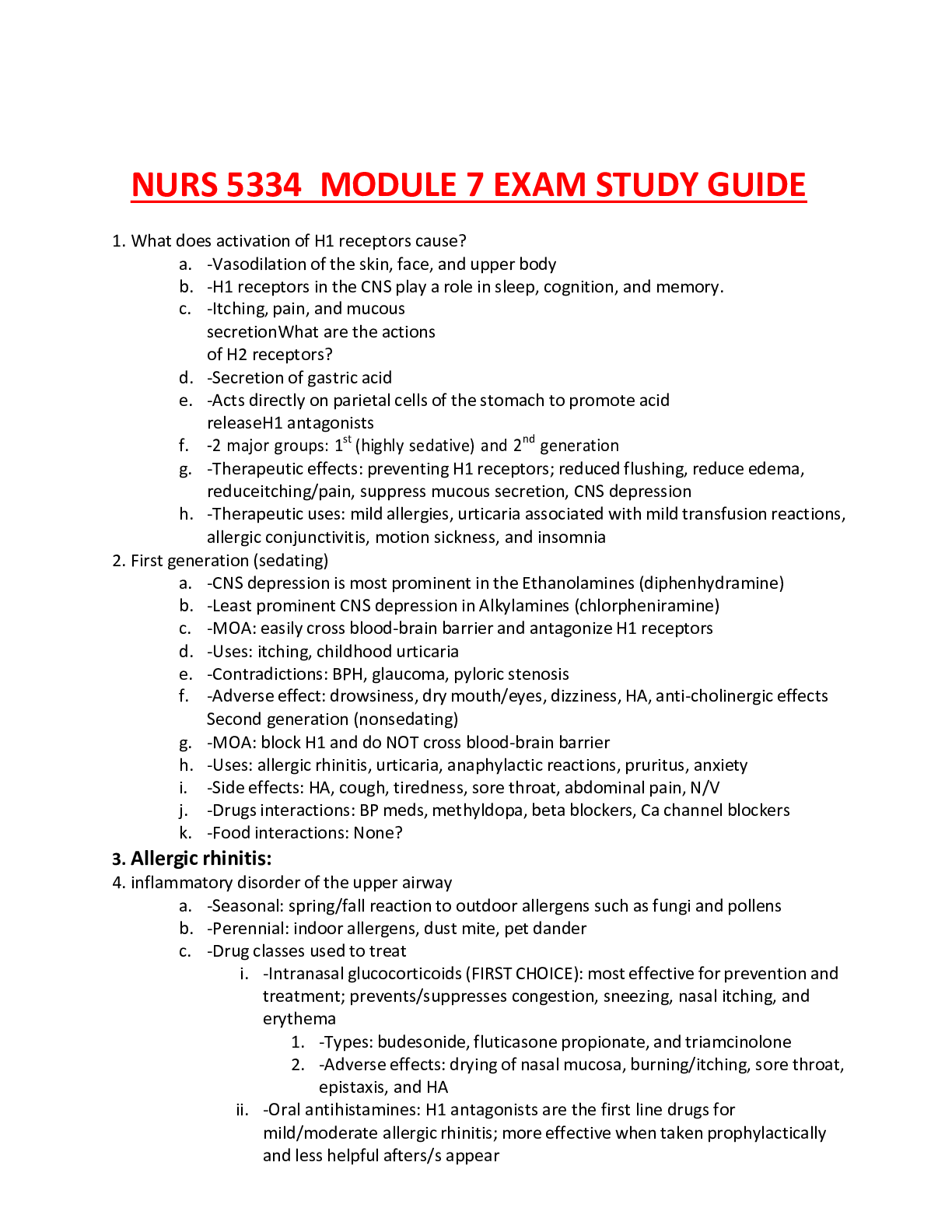Health Care > STUDY GUIDE > NUR2063 Essentials of Pathophysiology Final Exam Study Guide (Latest 2022:2023) (All)
NUR2063 Essentials of Pathophysiology Final Exam Study Guide (Latest 2022:2023)
Document Content and Description Below
What is the difference between a sign and a symptom? (Ans- Sign - Objective (Erythema, Edema, lesion) Symptom - Subjective (Headache, sore, tired) Na – Sodium (Ans- 136-144 mEq Hyponatremia - anor... exia, gastrointestinal upset, poor skin turgor, dry mucous membranes, blood pressure changes, pulse changes, edema, headache, lethargy, confusion, diminished deep tendon reflexes, muscle weakness, seizures, and coma | Hypernatremia - increased temperature, warm and flushed skin, dry and sticky mucous membranes, dysphagia, increased thirst, irritability, agitation, weakness, headache, seizures K - Potassium (Ans- o 3.7-5.2 mEq | Hypokalemia - muscle weakness, paresthesia, hyporeflexia, leg cramps, weak and irregular pulse, hypotension, dysrhythmias, electrocardiogram changes, decreased bowel sounds, abdominal distension, constipation, ileus, and cardiac arrest| Hyperkalemia - paresthesia, muscle weakness, flaccid paralysis, bradycardia, dysrhythmias, electrocardiogram changes, cardiac arrest, respiratory depression, abdominal cramping, nausea, and diarrhea Mg - Magnesium (Ans- .8-2.5 mEq | Hypermagnesemia - Same as hypercalcemia | Hypomagnesemia - same as hypocalcemia Ca – Calcium (Ans- 4 - 5 mEq | Hypercalcemia - dysrhythmias, electrocardiogram changes, personality changes, confusion, decreased memory, headache, lethargy, stupor, coma, muscle weakness, decreased deep tendon reflexes, anorexia, nausea, vomiting, constipation, abdominal pain, pancreatitis, renal calculi, polyuria, and dehydration | Hypocalcemia - dysrhythmias, electrocardiogram changes, increased bleeding tendencies, anxiety, confusion, depression, irritability, fatigue, lethargy, paresthesia, increased deep tendon reflexes, tremors, muscle spasms, seizures, laryngeal spasms, increased bowel sounds, abdominal cramping, and positive Trousseau's and Chvostek's signs P – Phosphorus (Ans- .5 - 4.5 mg | Hyperphosphatemia - dysrhythmias, electrocardiogram changes, increased bleeding tendencies, anxiety, confusion, depression, irritability, fatigue, lethargy, paresthesia, increased deep tendon reflexes, tremors, muscle spasms, seizures, laryngeal spasms, increased bowel sounds, abdominal cramping, and positive Trousseau's and Chvostek's signs Hypophosphatemia - dysrhythmias, electrocardiogram changes, personality changes, confusion, decreased memory, headache, lethargy, stupor, coma, muscle weakness, decreased deep tendon reflexes, anorexia, nausea, vomiting, Function of ribosomes (Ans- Synthesizes proteins · Hypervolemia (Ans- Fluid volume excess in intravascular space · Hypovolemia (Ans- Fluid volume deficit in intravascular space · Homeostasis (Ans- State of balance - reached by positive and negative feedback - self regulated [Show More]
Last updated: 1 year ago
Preview 1 out of 27 pages
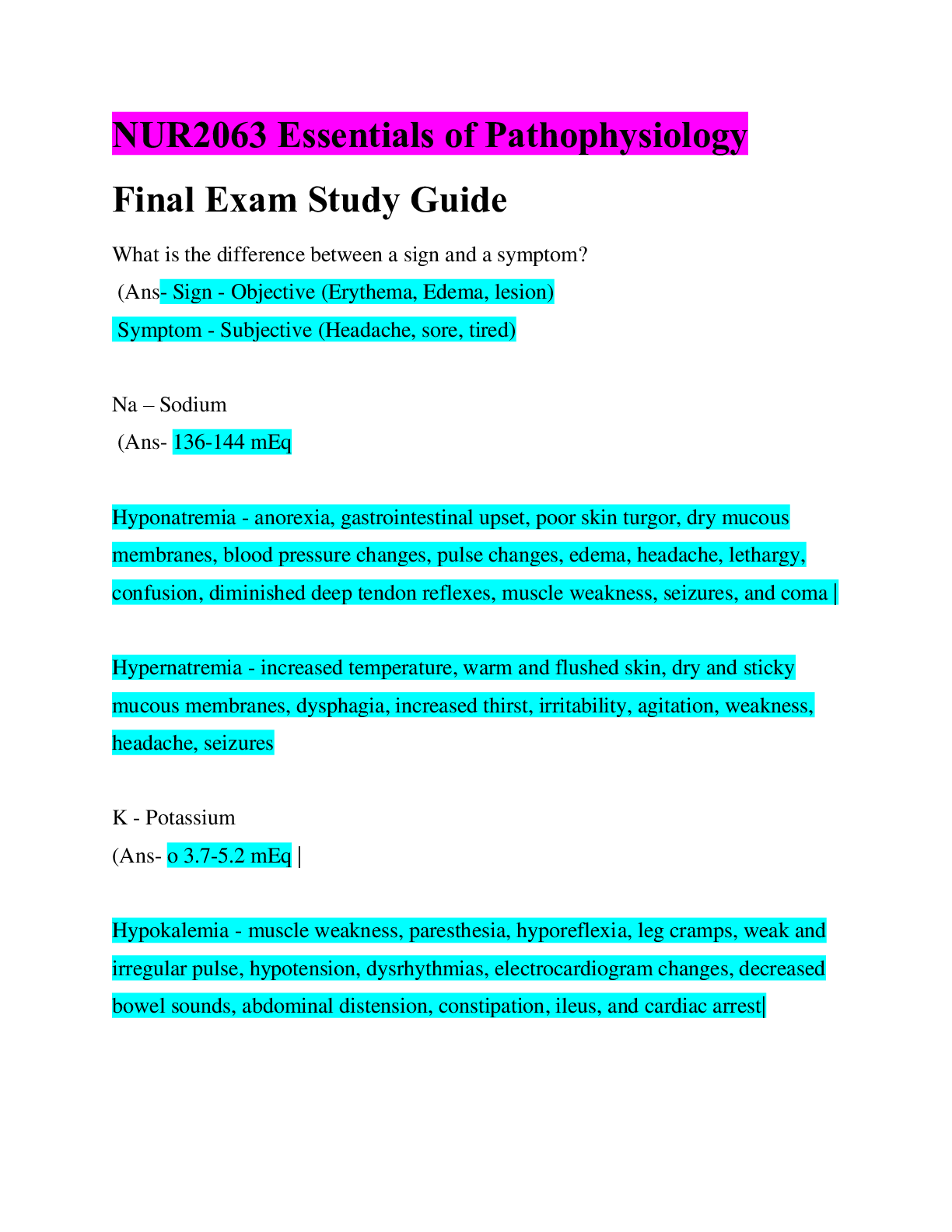
Reviews( 0 )
Document information
Connected school, study & course
About the document
Uploaded On
Mar 09, 2022
Number of pages
27
Written in
Additional information
This document has been written for:
Uploaded
Mar 09, 2022
Downloads
0
Views
55

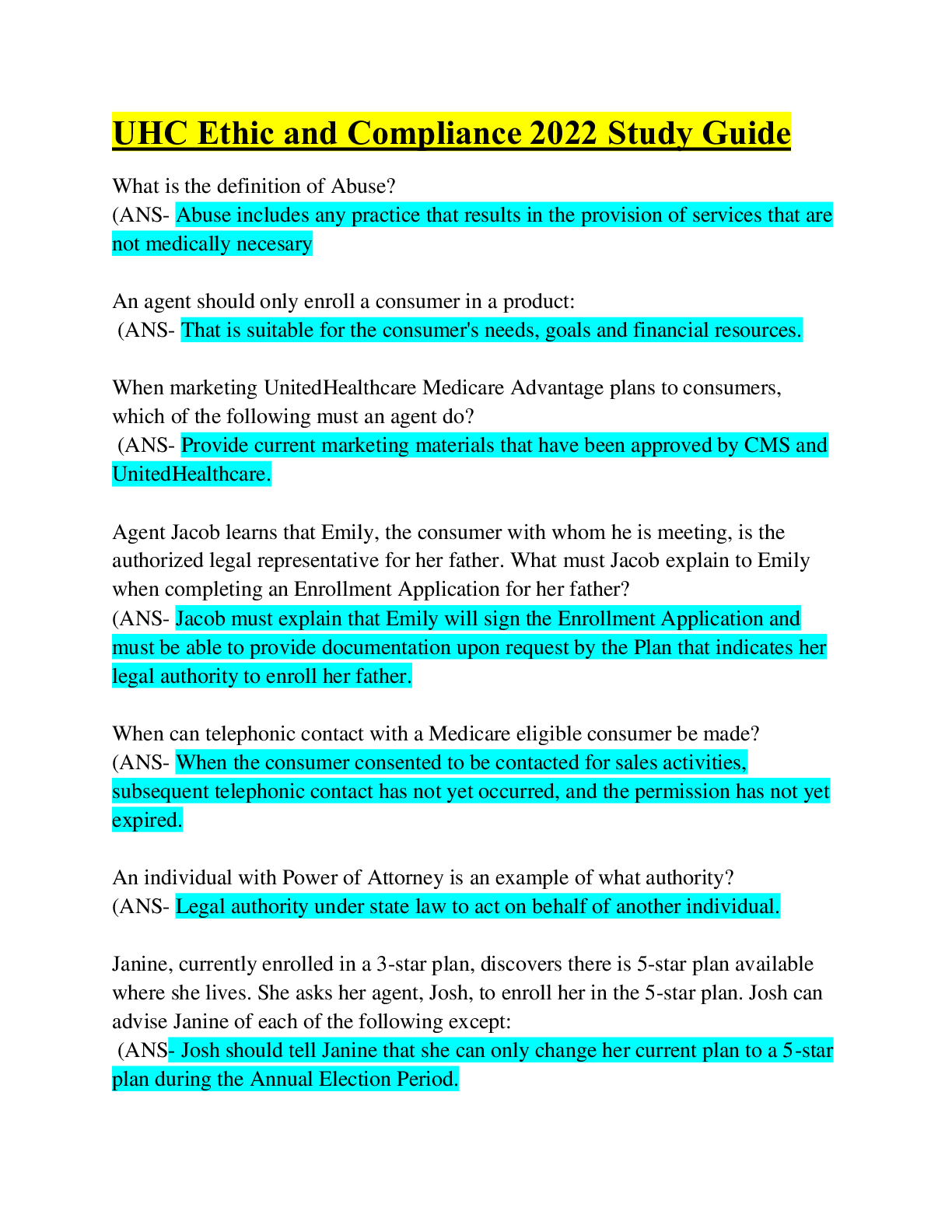
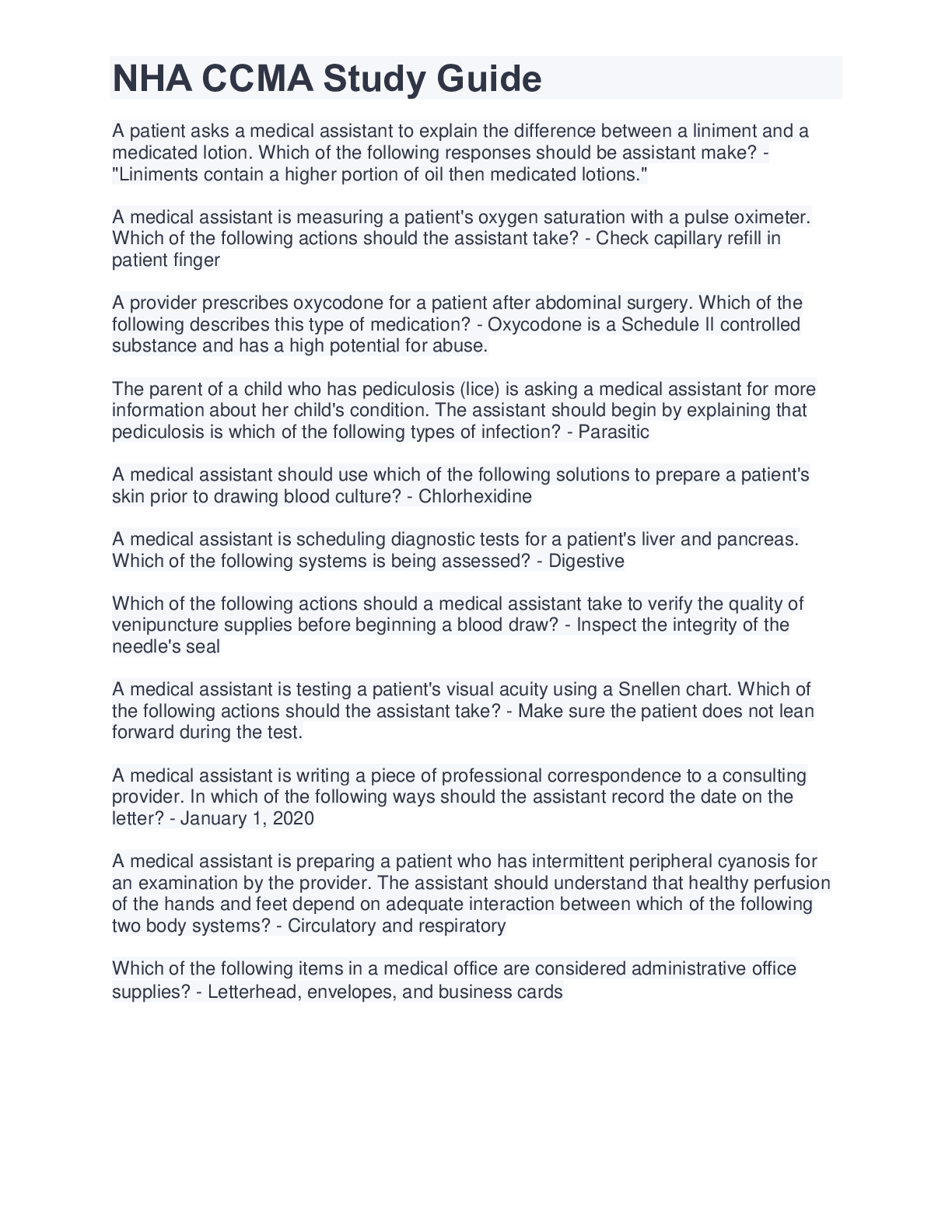
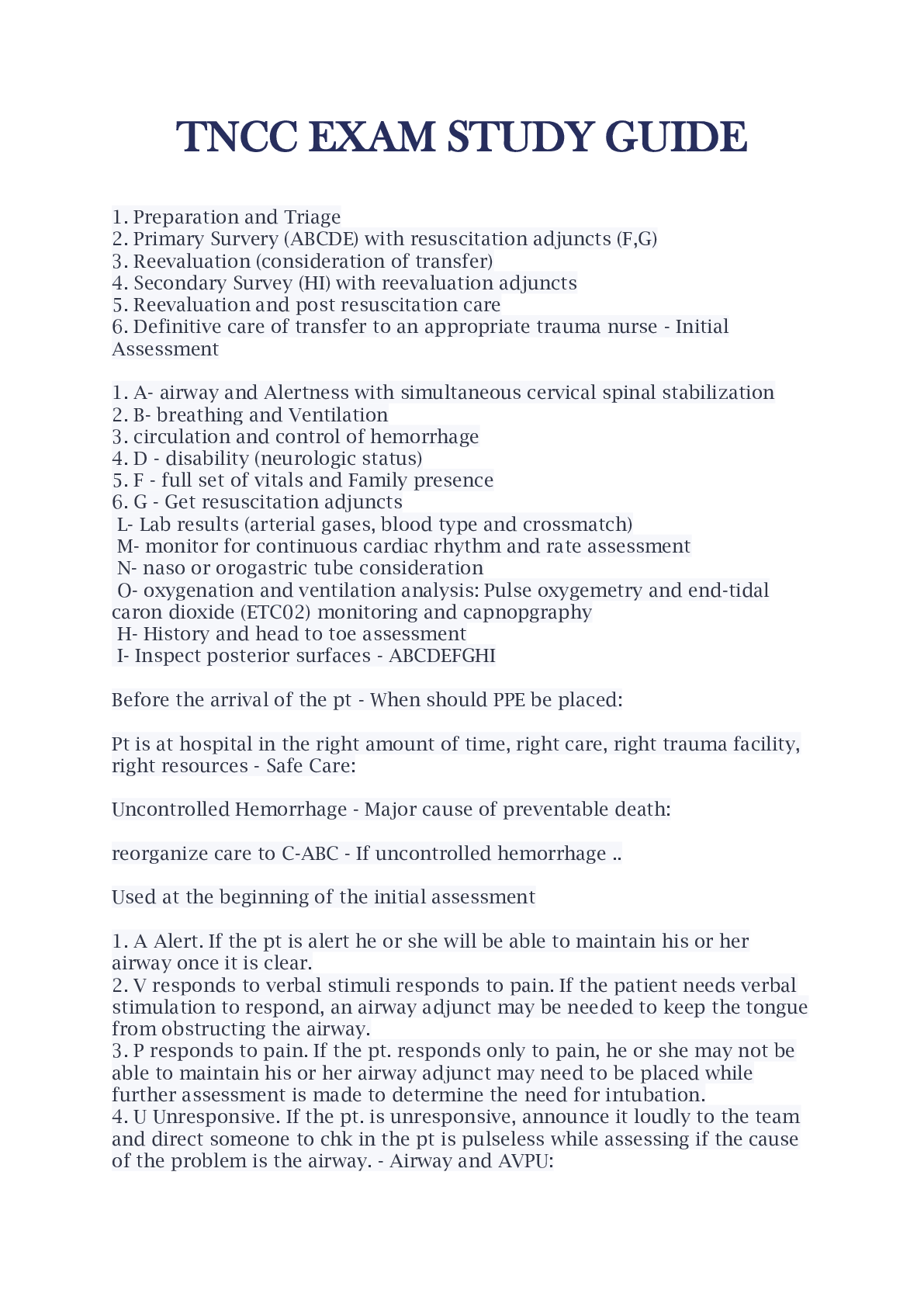

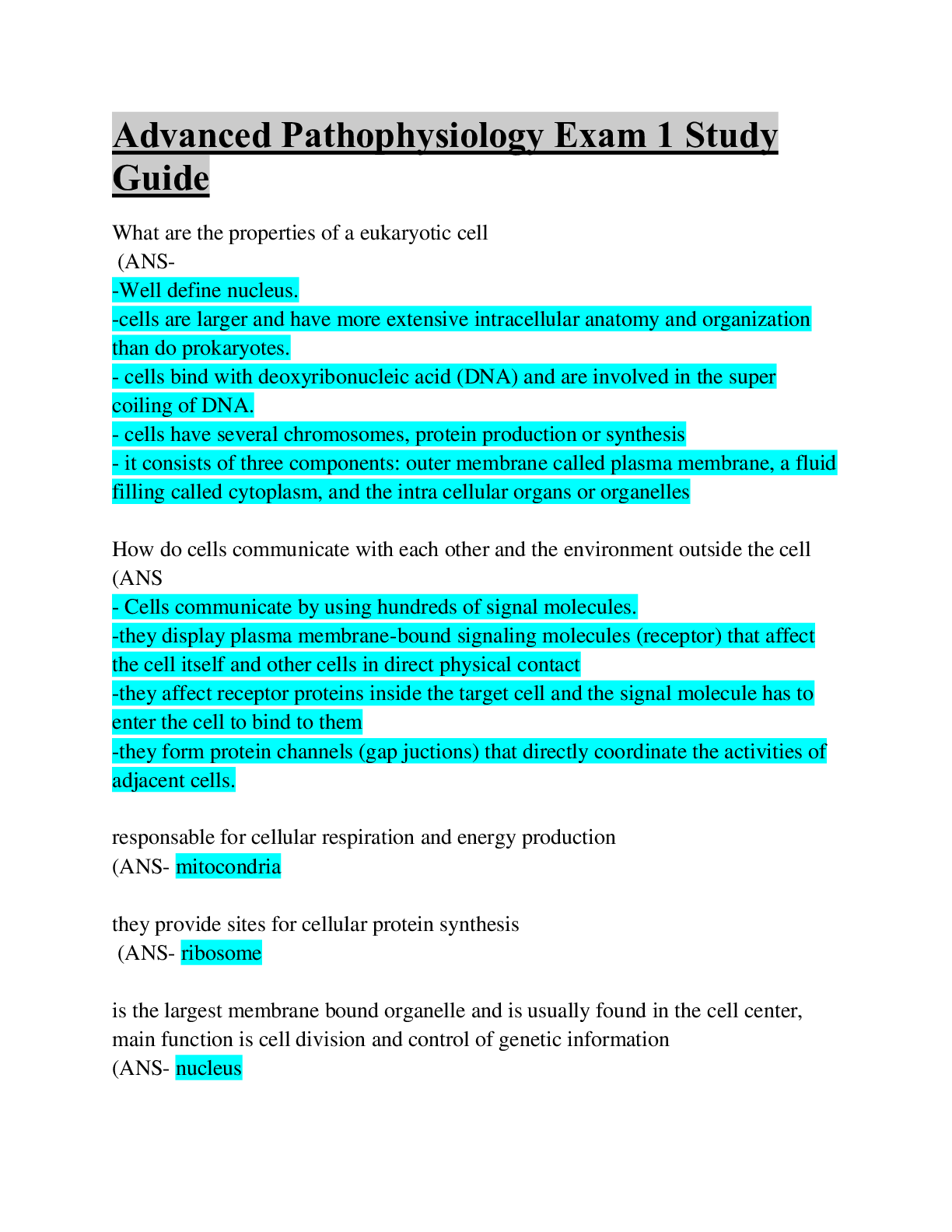
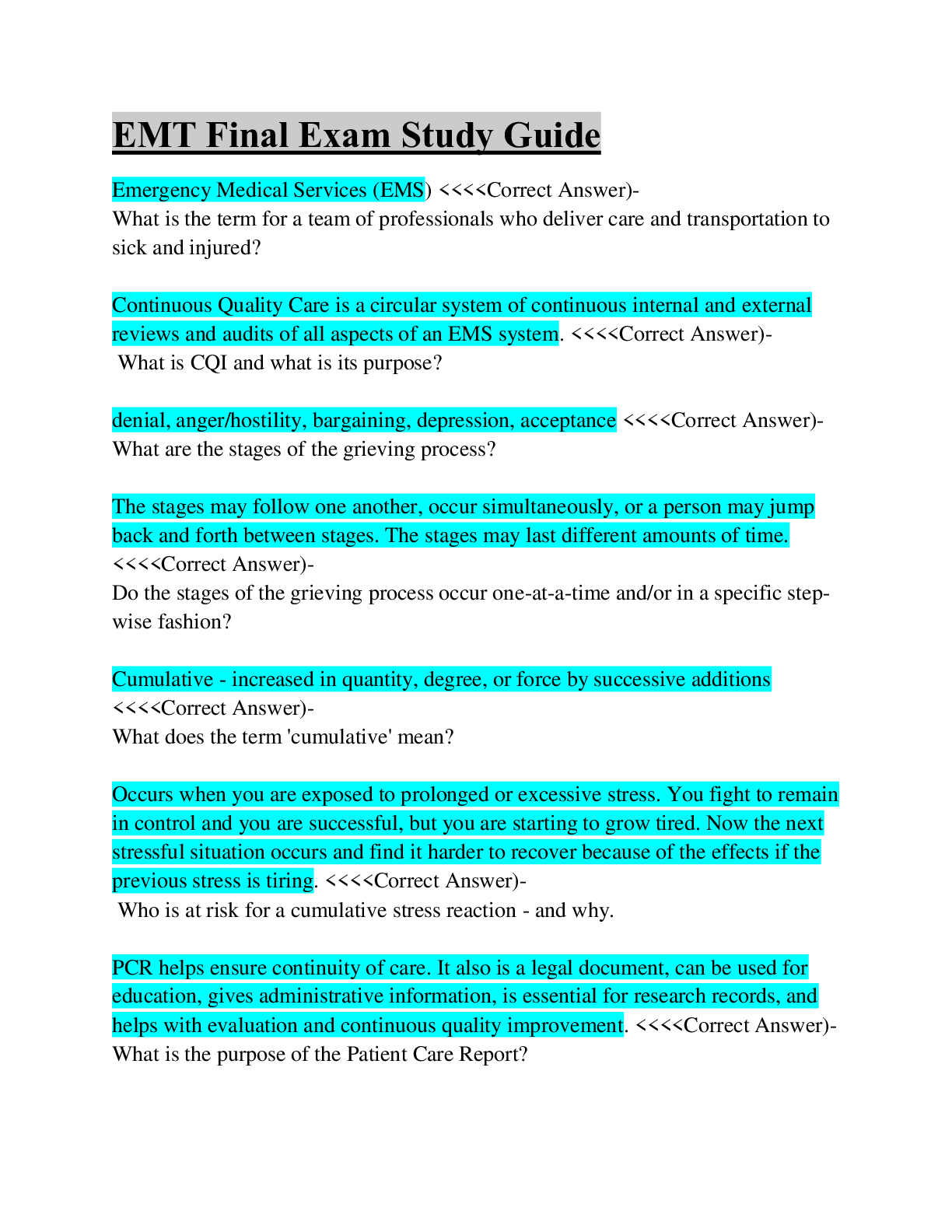
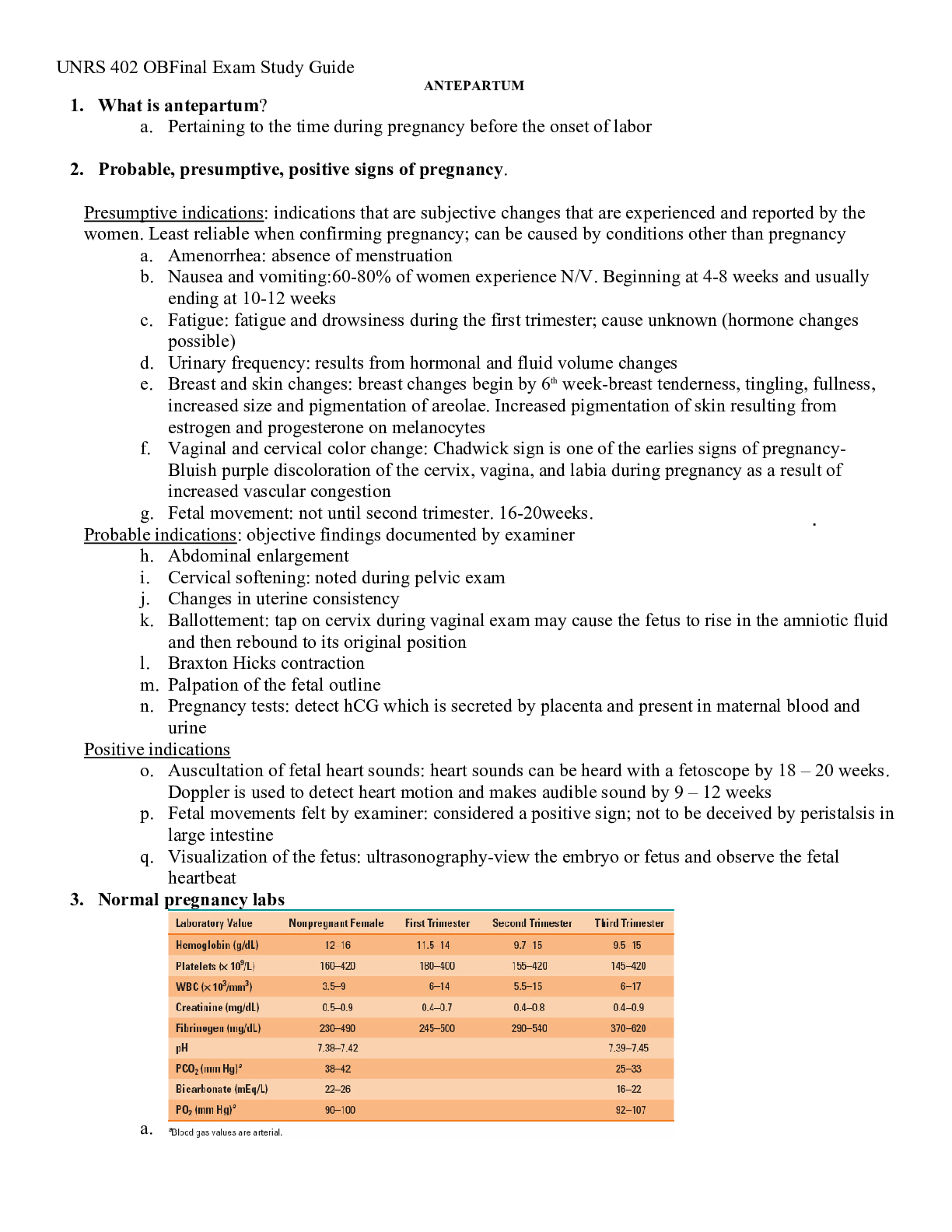
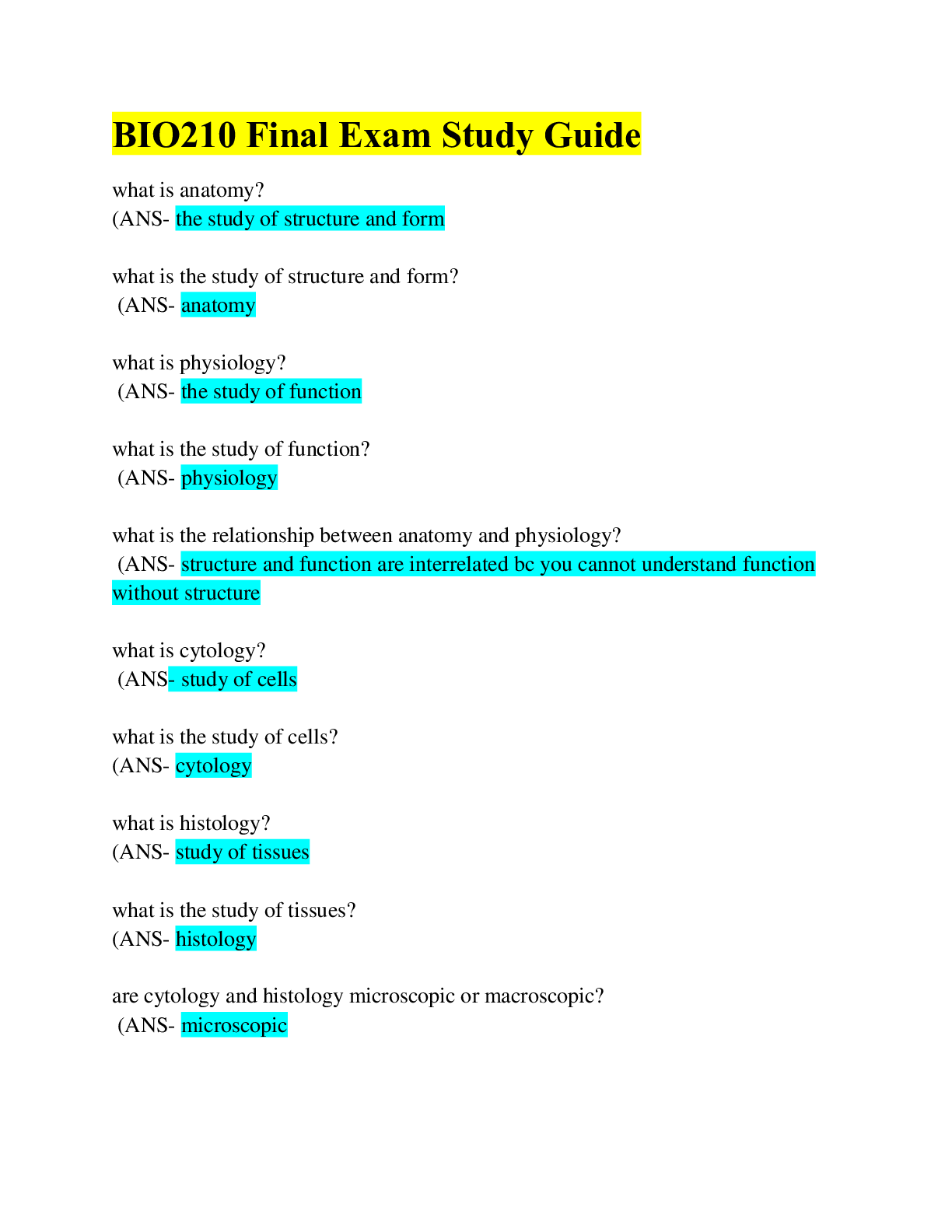
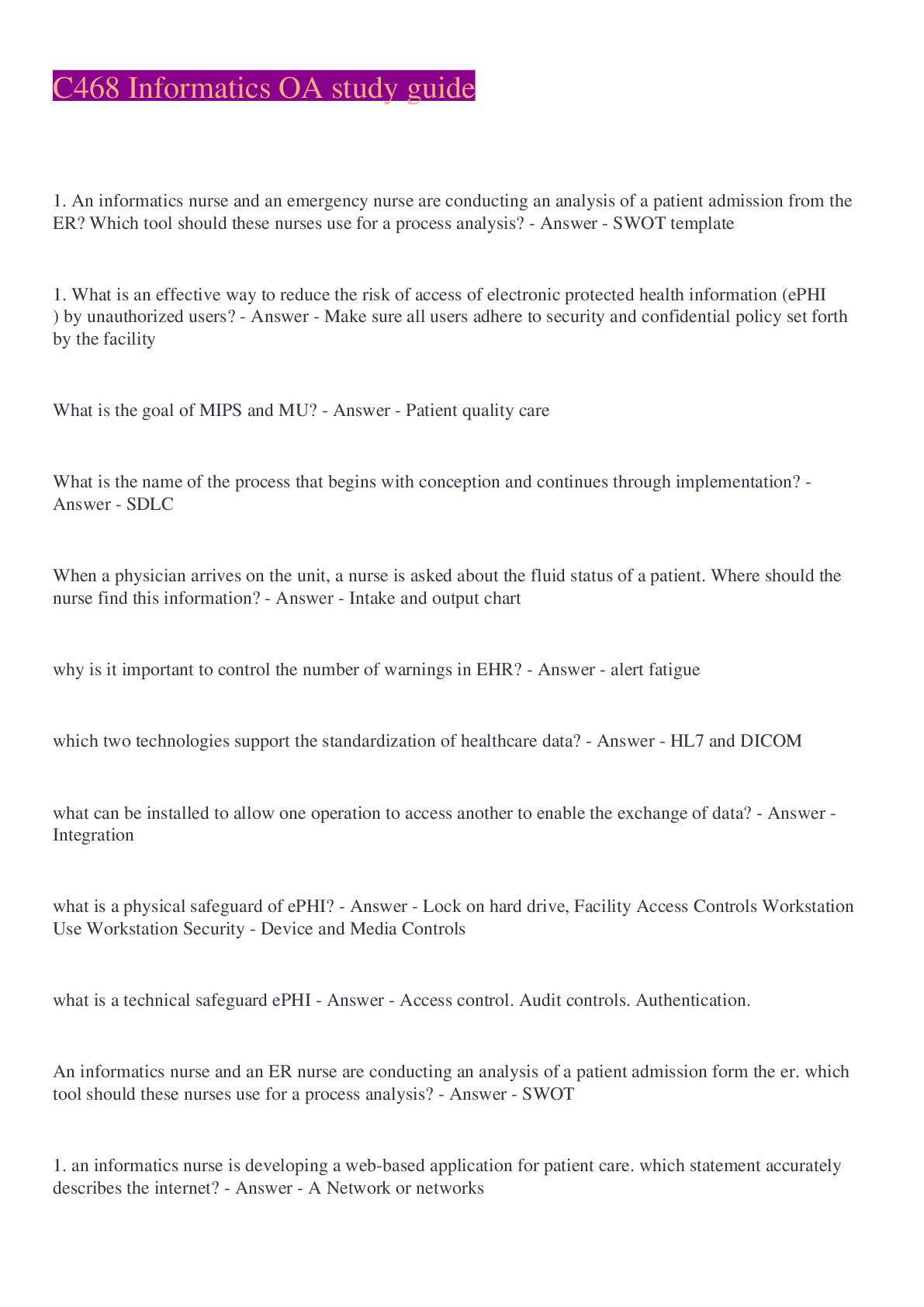

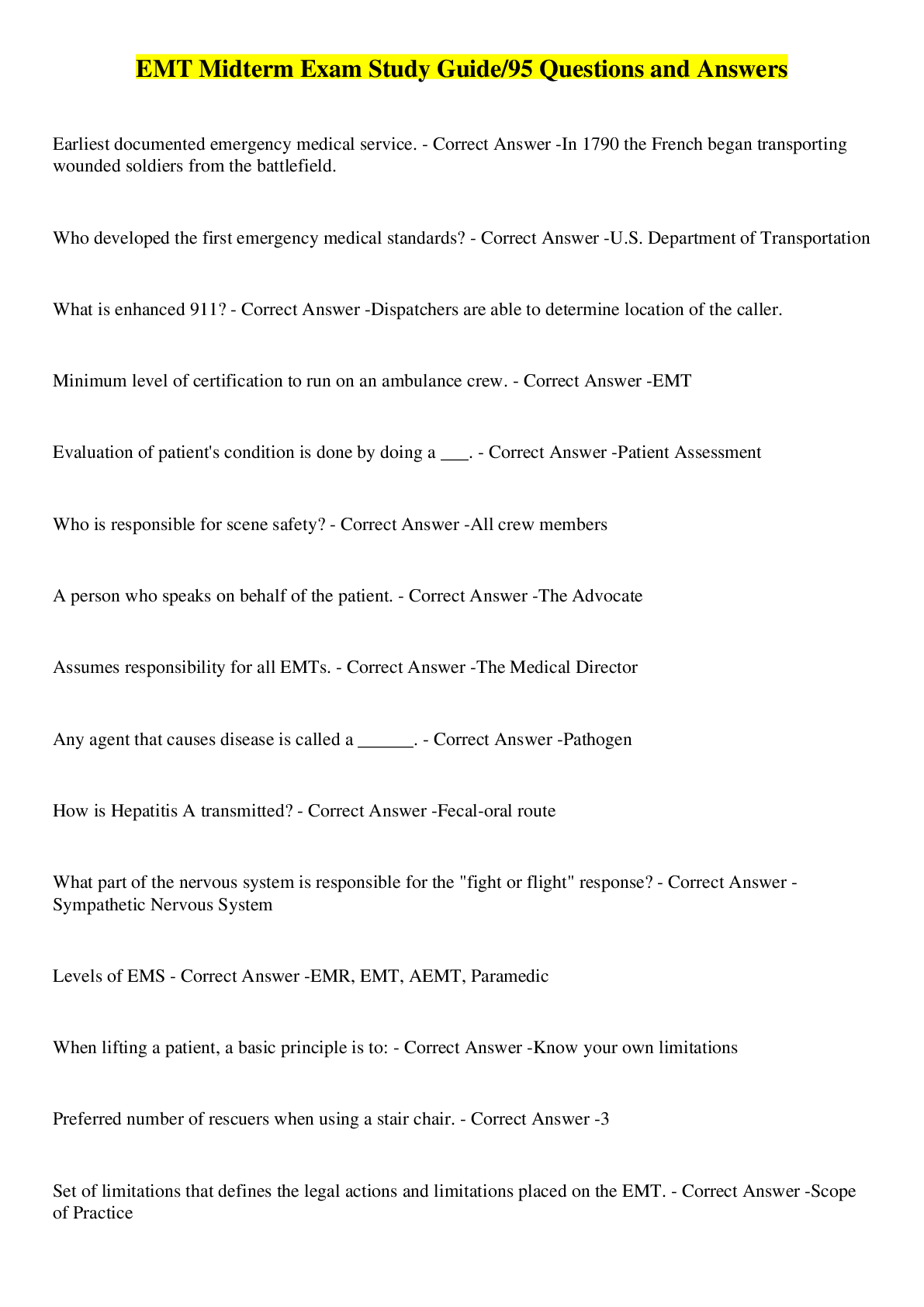
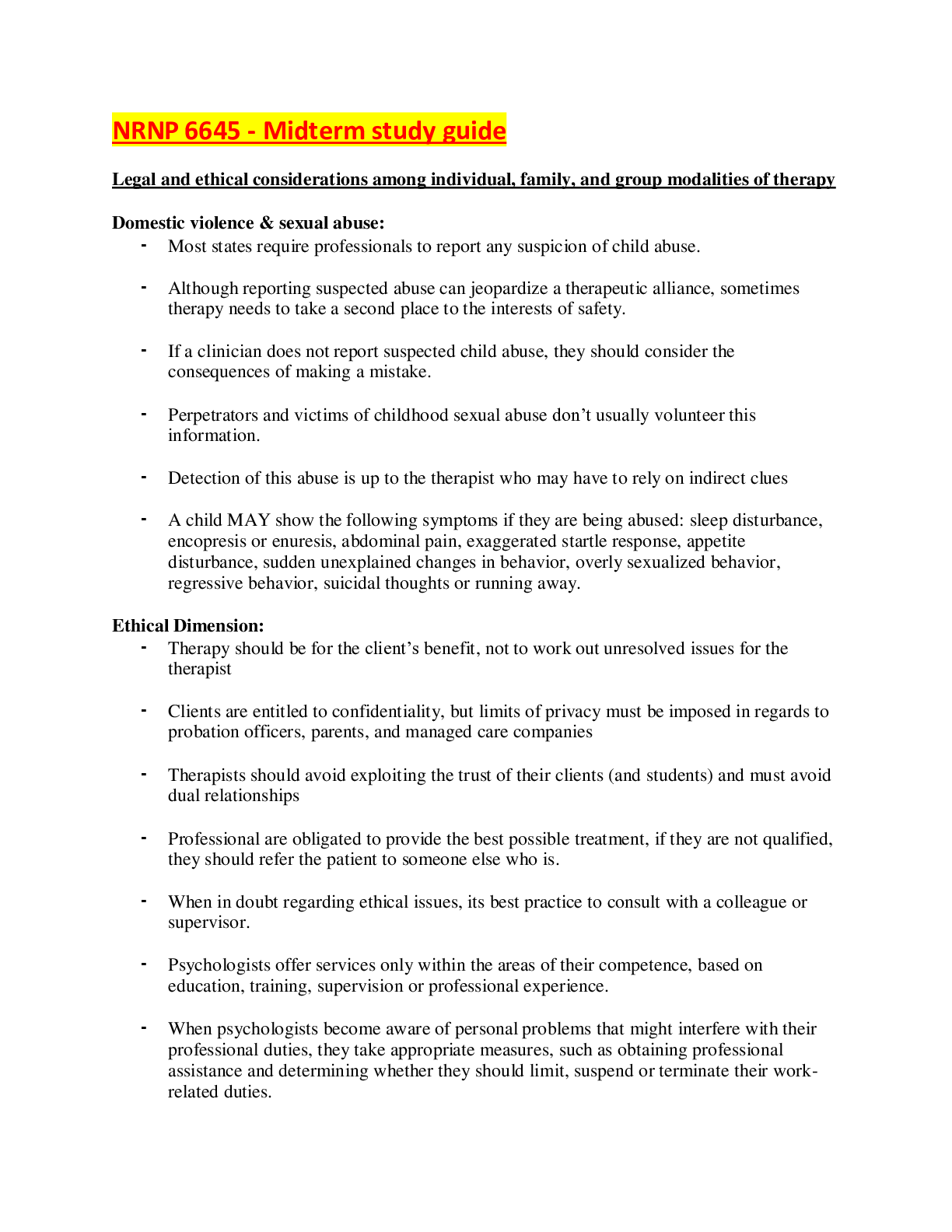
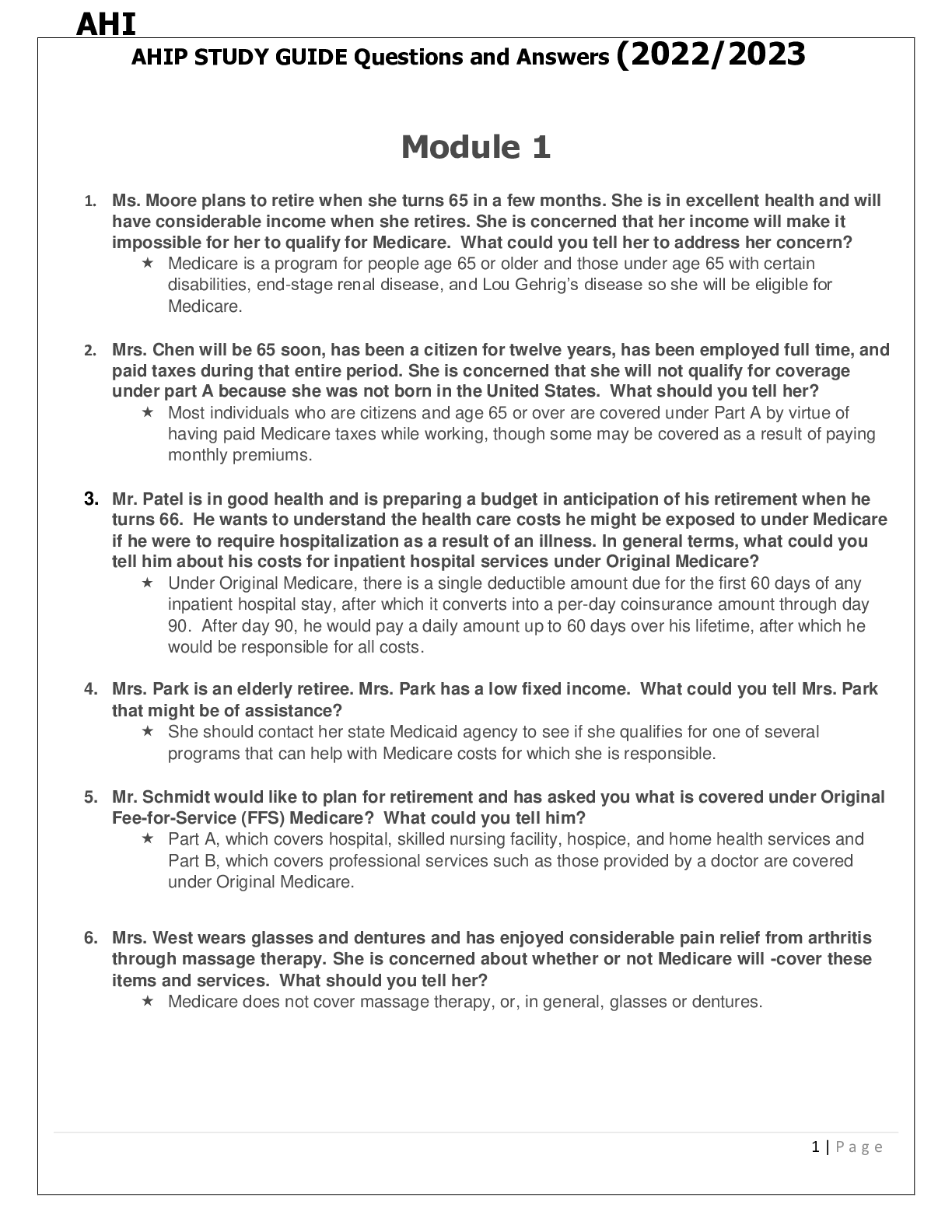
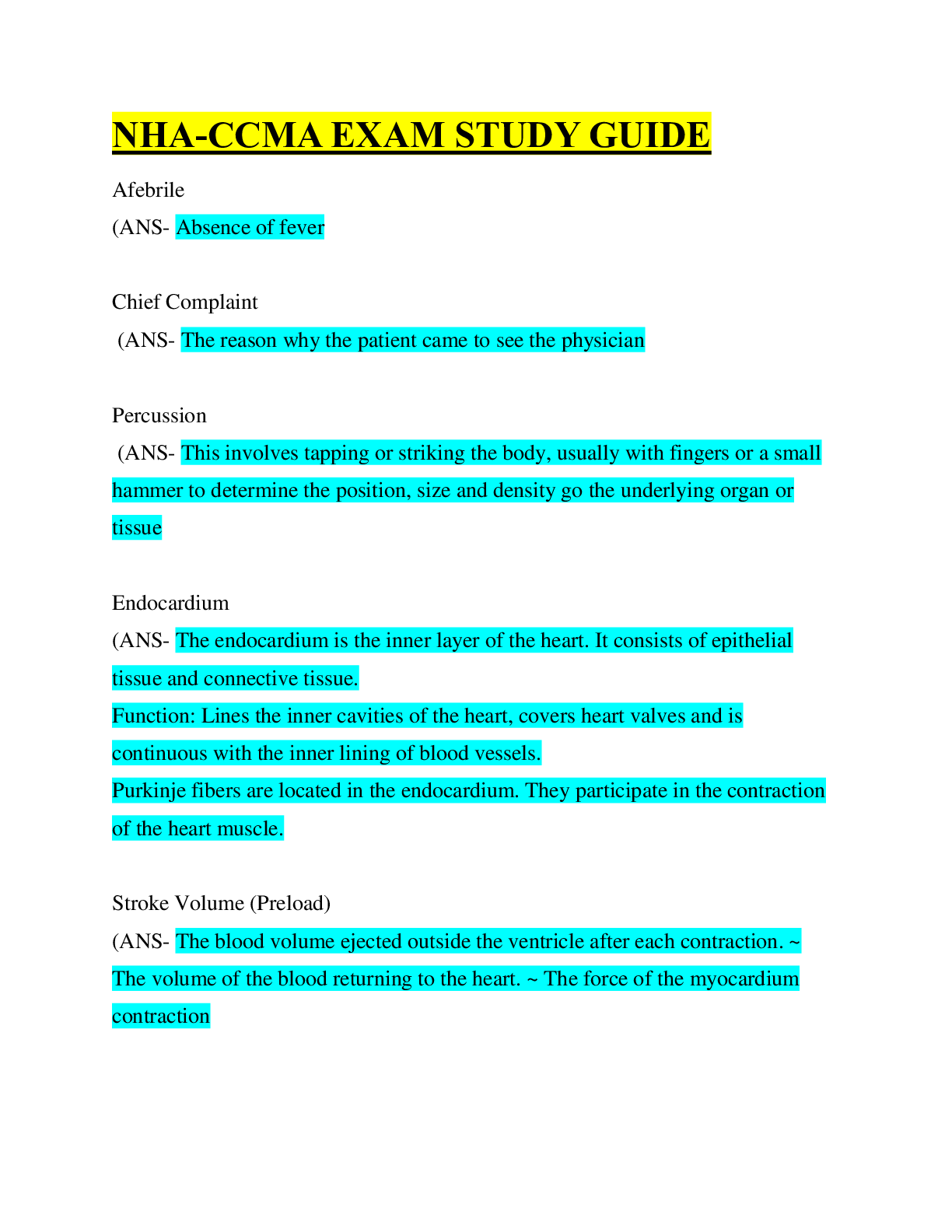
 Study Guide.png)
 Exam Study Guide.png)




 Rasmussen College.png)
